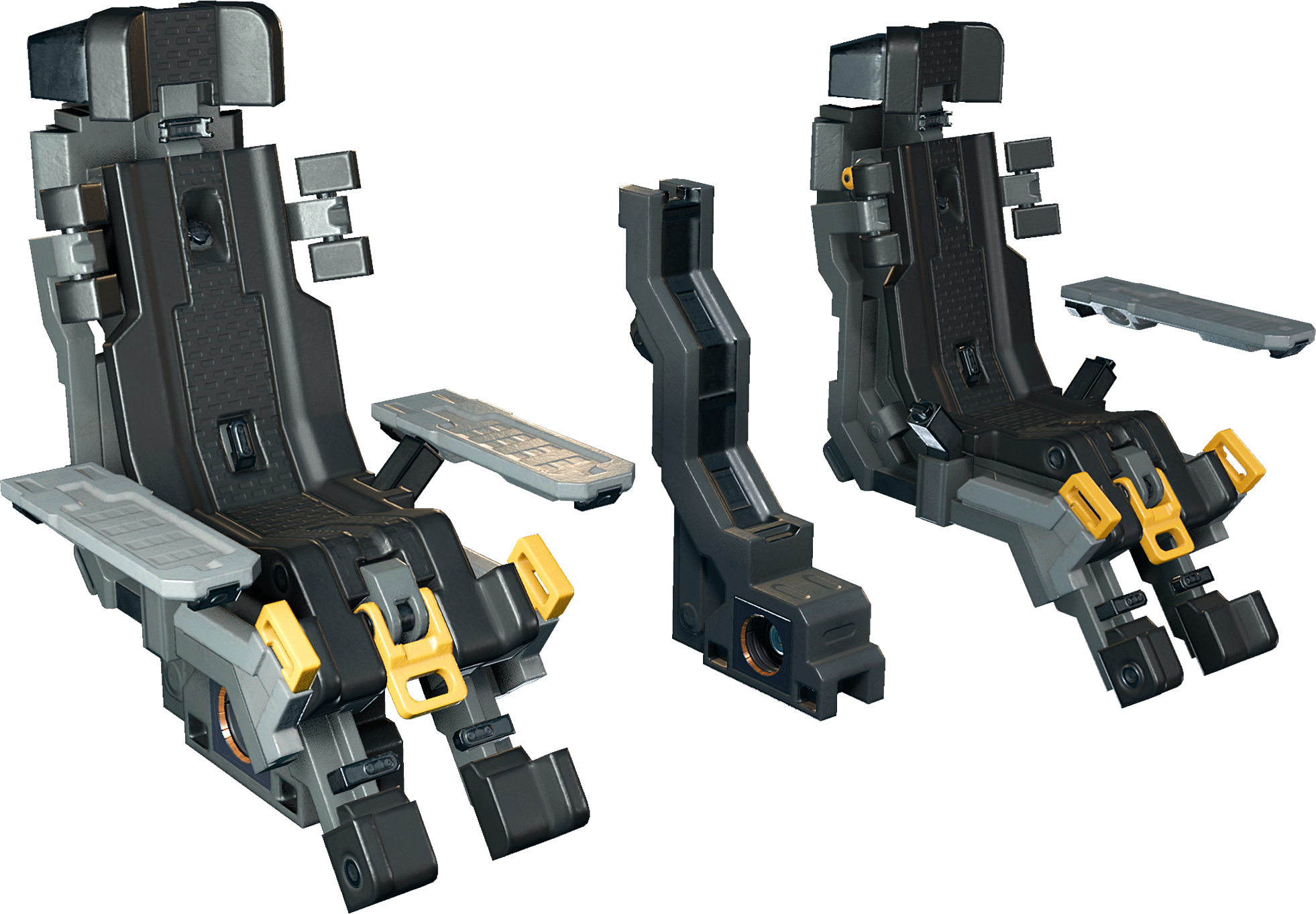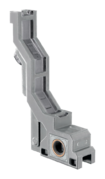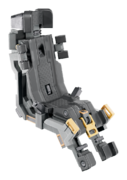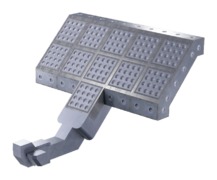Difference between revisions of "Pilot chair"
Jump to navigation
Jump to search
m |
|||
| Line 146: | Line 146: | ||
* Two sides (arm rests) | * Two sides (arm rests) | ||
== Gallery == | |||
<gallery mode="packed" widths="220px"> | |||
Image:Pilot chair stand.png|''Pilot chair stand'' | |||
Image:Pilot chair.png|''Pilot chair'' | |||
Image:Pilot chair sides.png|''Pilot chair sides'' | |||
Image:Pilot chair control table.png|''Pilot chair control table'' | |||
</gallery> | |||
[[Category:Devices and machines|Chairs]] | [[Category:Devices and machines|Chairs]] | ||
Revision as of 07:07, 3 June 2021
Pilot chair
Type Control device
Function Allows keybinding
Availability Luxury Items
Size 156×100×144 cm (assembled)
Mass 2,784.30 kg (assembled)
Volume 279.83 kv (assembled)
Corrosion resistance 375 (lowest)
Input / Output
Sockets 2
Modular interfaces 20 (control table)
Composition (chair)
Composition (control table)
Composition (armrest)
Composition (stand)
Pilot chairs are a unique type of seat: Not only can they provided convenient modular interfaces for devices such as levers and buttons, but they also enable the user to configure key-binds for controllable devices within a short radius around them.
Basic information
A pilot's chair provides additional support and comfort for endoskeletons during long journeys in space. The armrests provide a convenient mounting point for input devices, but so too does the control table: A large panel packed with 20 modular interfaces to support screens, buttons, and more.
Pilot seats can be assembled from four pieces bolted together, though the seat is functional as a single part:
- Seat
- Stand
- Two sides (arm rests)




